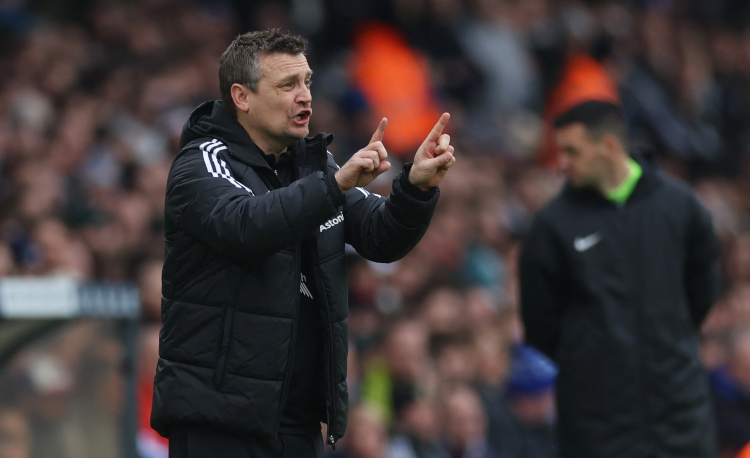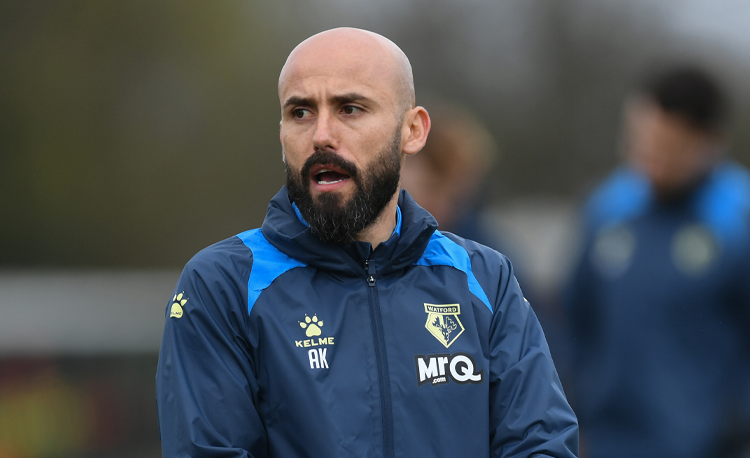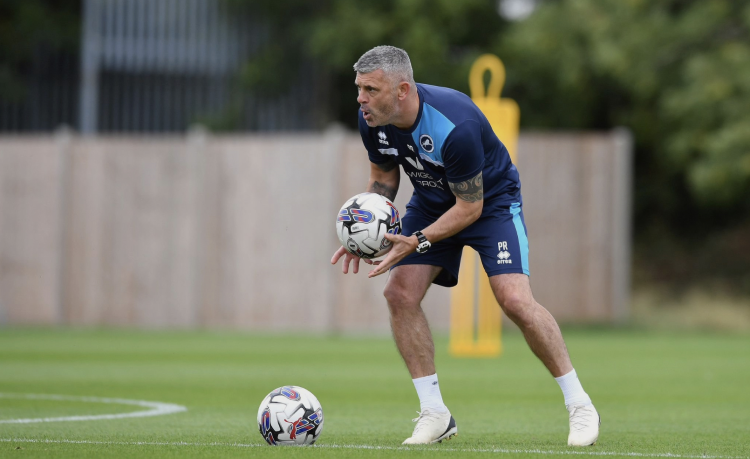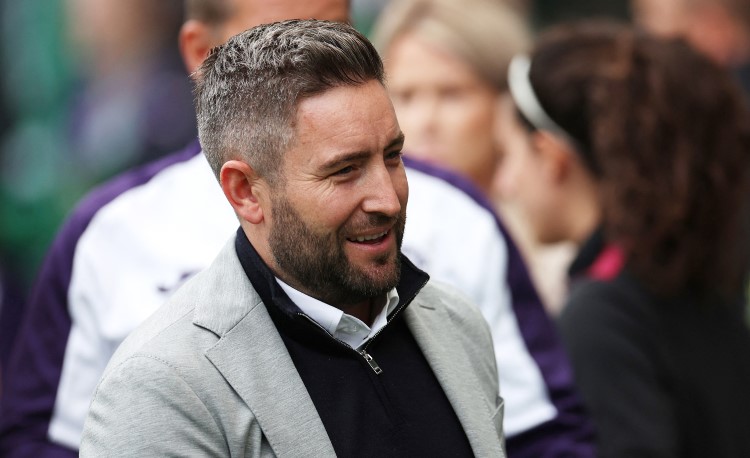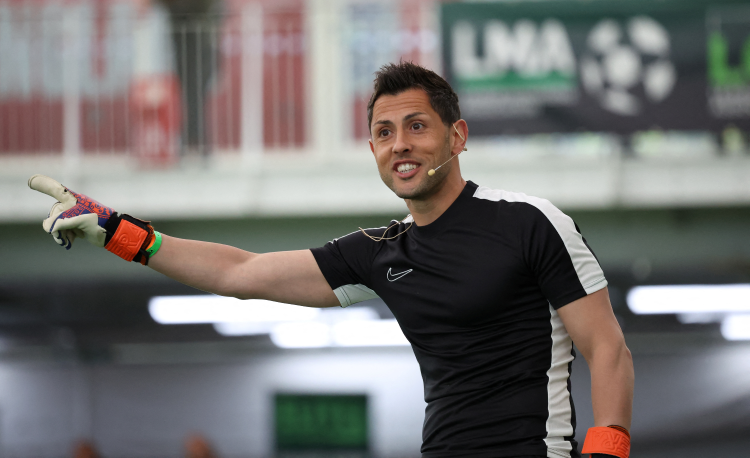You are viewing 1 of your 1 free articles
Counter-pressing principles and rest defence
The session is about the moment the team loses the ball in certain situations, and how we then want the team to react with performance behaviours.
| Area | Up to full pitch width x 80 yards length |
| Equipment | Balls, bibs, mini and full size goals |
| No. of Players | Up to 22 players including 2 goalkeepers |
| Session Time |
Possession transfer: 15mins |
The session is about the moment the team loses the ball in certain situations, and how we then want the team to react with performance behaviours. So not only are we focusing on how we want the units to react when we lose the ball, but we’re also concentrating on how we want the players to consider defending whilst we have possession of the ball.
The aim of the session is for it to be high intensity, with lots of ball rolling, and it will usually be done on a matchday -4 or matchday -3, or on an occasion when I feel the players need to experience lots of decision making in games. So, I want to see high levels of accelerations and decelerations, aligned to counter-pressing principles. I also want high levels of ball moving time with low intervals and possession-based practice.
How often we will run it depends on the match week, but through the course of a season it is important to revisit the performance behaviours as often as possible with the concentration around different stimuli and sessions, depending on the match preparation week. Regardless, I would always look to fit in some kind of session each week including an element of counter-pressing and rest defence.
“I want to see high levels of accelerations and decelerations, aligned to counter-pressing principles, alongside high levels of ball moving time with low intervals and possession-based practice”
Possession transfer
We set up in an area 45 yards wide (split into sections of 20-5-20 yards), 20 yards long. There will be two teams of seven players – blues v reds – with an additional two yellow players, or ‘jokers’ occupying the 5x20 central space.
The blues begin in possession, looking to complete a certain number of passes, with the reds tasked to go and win the ball back [1a].
[1a]

-
The blues begin in possession, looking to complete a certain number of passes
- The blues aim to transfer the ball through the jokers
Once the pass number is completed, the blues then aim to transfer the ball through the jokers’ channel to the other side of the pitch area.
The reds now take possession, with one of the yellow jokers allowed to drop into an end zone to provide the in-possession team with an overload [1b].
[1b]
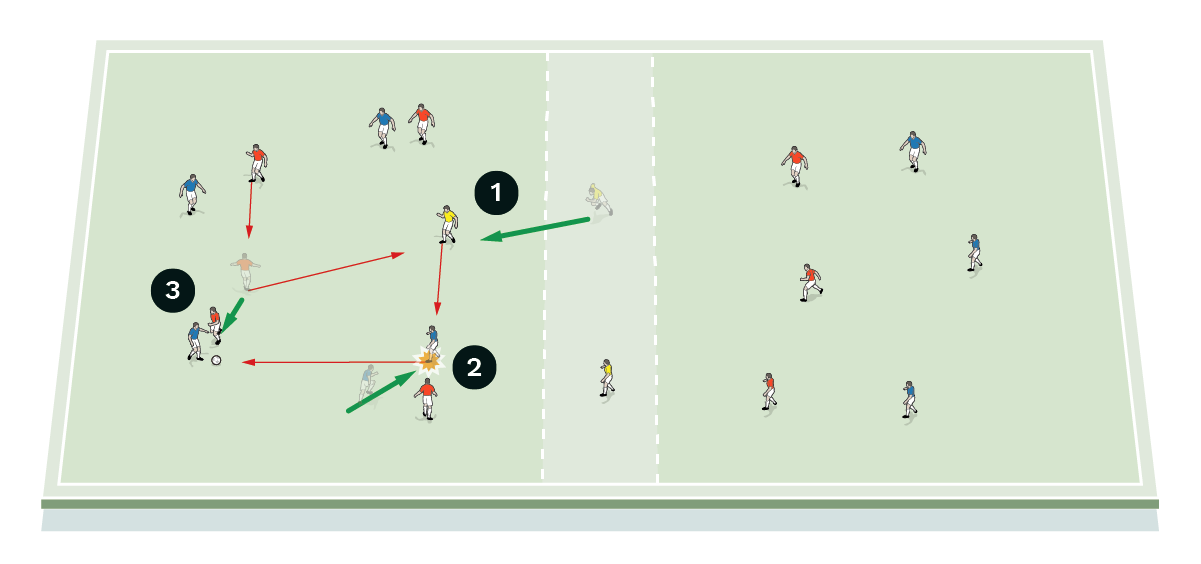
-
The reds take possession, with one of the yellow jokers allowed to drop into an end zone to provide the in-possession team with an overload
- The blues aim to win the ball back - and do so through an interception
- The reds aim to counter-press to look to regain the ball back quickly
The blues aim to win the ball back. If they do so, the reds should counter-press, looking to regain the ball back quickly. For the counter-press to count, the player must take the ball fully.
To progress the session further, once a yellow player is released, an opposite same-colour possession player can drop into the channel to receive to link play out. However, a defender can go in front or behind, acting and practicing the rest defensive positions. Two mini goals at each end can also be added for the pressing team to score in or play round, depending on the situation.
Possession with mini goals
We set up in an area 40x40 yards, with six mini goals, as shown. We use 20 players – six blues, six reds, six greens and two players as jokers – plus two coaches feeding balls from the corners for restarts. The session played in six blocks of 90 seconds each. The team aiming to retain possession rotates each block.
The reds begin in possession, working with the jokers to complete 10 passes, with the blues pressing to win the ball back [2a].
[2a]
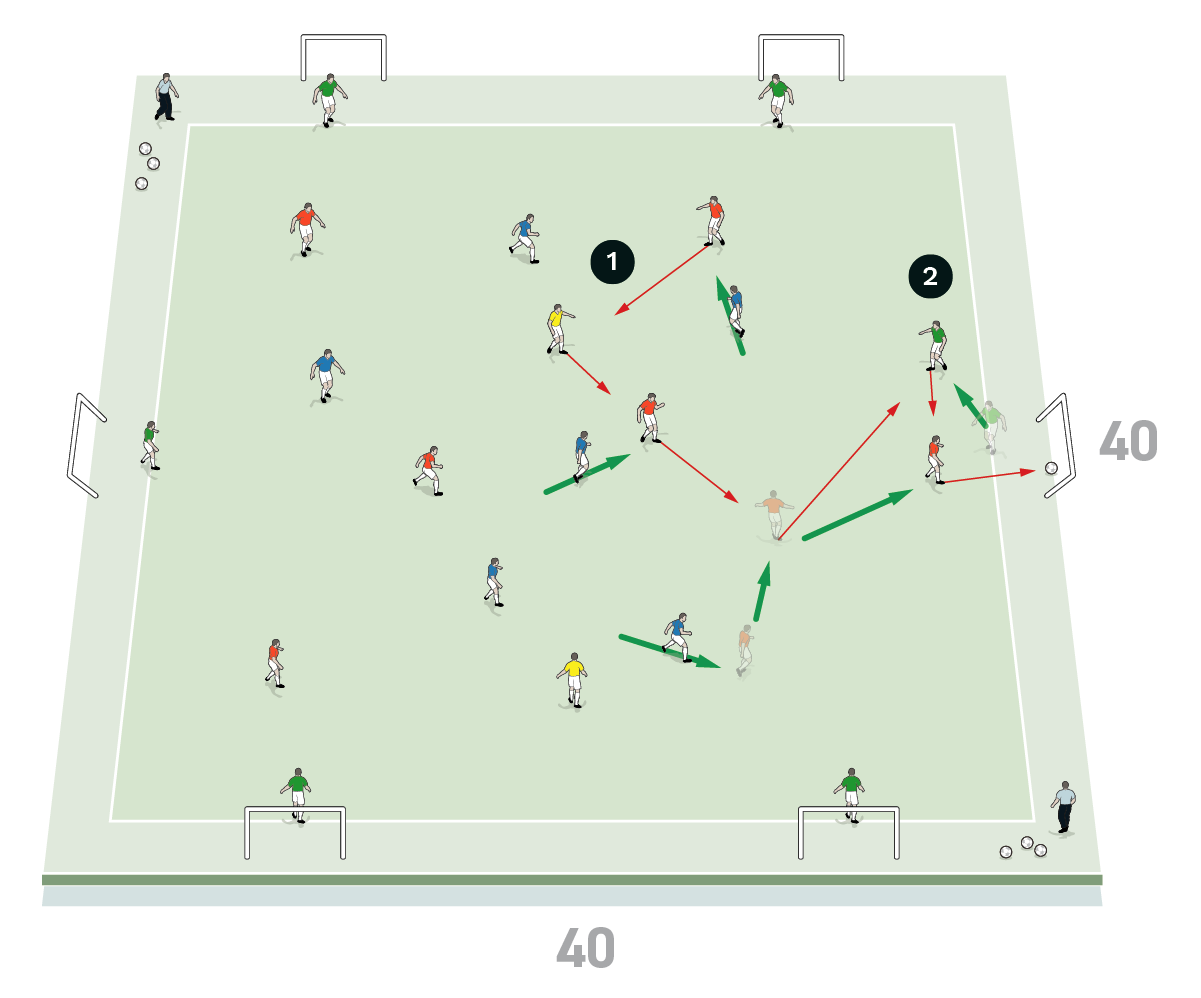
-
The reds begin in possession, working with the yellow jokers to complete 10 passes, with the blues pressing to win the ball
- At the end of the passing sequence, a red will look to play a one-two with a green player, to then score in one of the mini goals
“We set a limit of a maximum of three touches for the possession player throughout the exercise to encourage passing”
When the blues win the ball back, their aim is to work the ball to a green player as quickly as possible, to score in a mini goal via a quick one-two with the green. The reds must quickly counter-press. If they win the ball back [2b] the reds will begin their sequence again, looking to achieve 10 passes.
[2b]
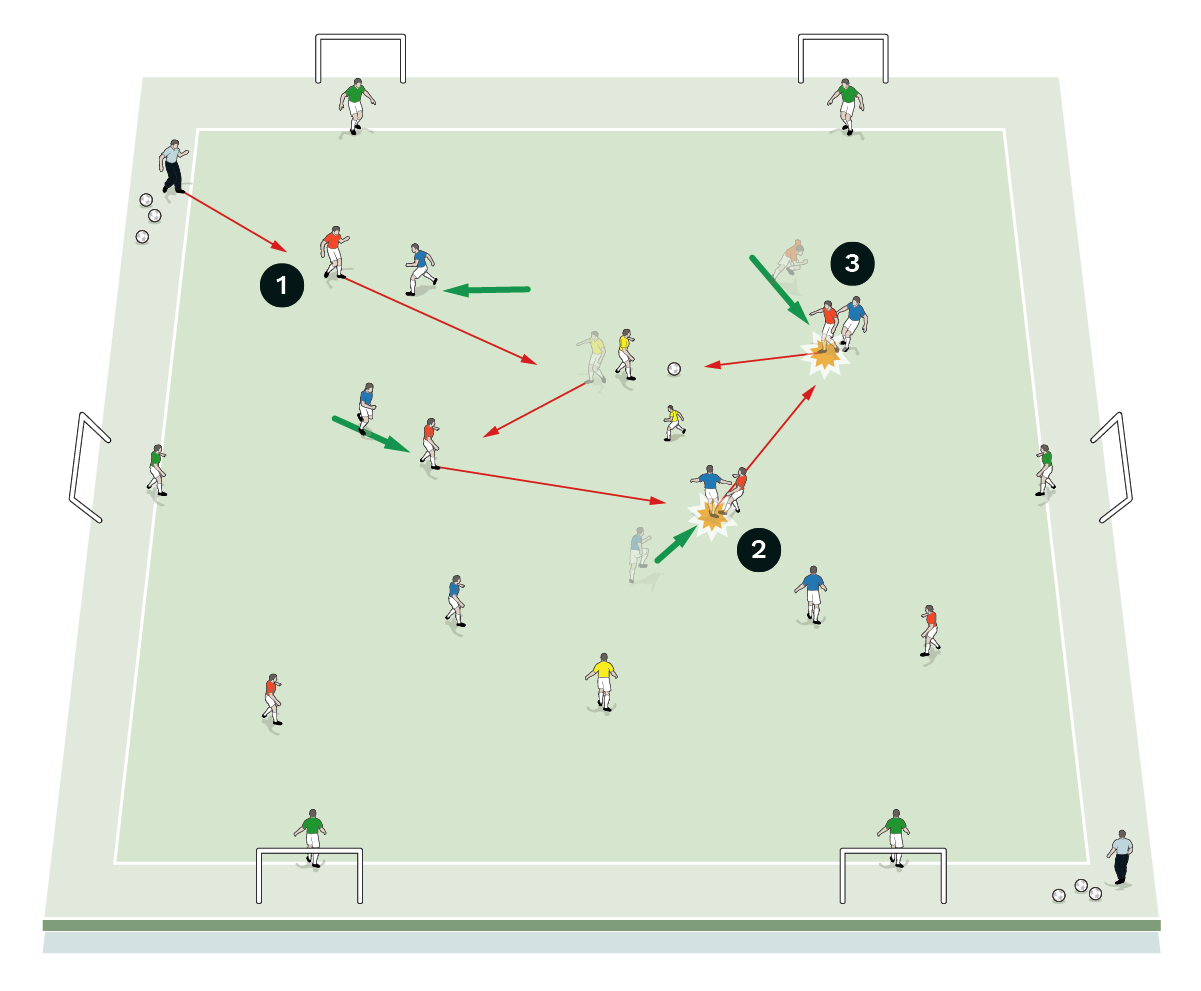
-
A coach restarts play
- The blues win the ball back, then look to score as quickly as possible
- The reds counter-press and win the ball back, beginning their 10-pass sequence again
We set a limit of a maximum of three touches for the possession player throughout the exercise to encourage passing.
To progress the session, we may look to vary the number of passes – either way – before having an effort on goal. We will also vary the timing blocks, and look to use directional mini goals if possible, to benefit directional transition.
11v11
We set up full pitch width and 80 yards in length, cornered off, as shown, at one end of the pitch. Three full size goals are used, as shown. We play 11v11. We work in for to six 4-minute blocks.
The red team sets up defending the cornered off end. This funnel allows the team to attack with realism and counter-press all areas.
We’re looking for players to bring to life the principles worked on in the first two practices. The red team should organise in a rest defence on the back line when they are in possession. When the ball is lost in certain areas, the red team should counter-press [3].
[3]
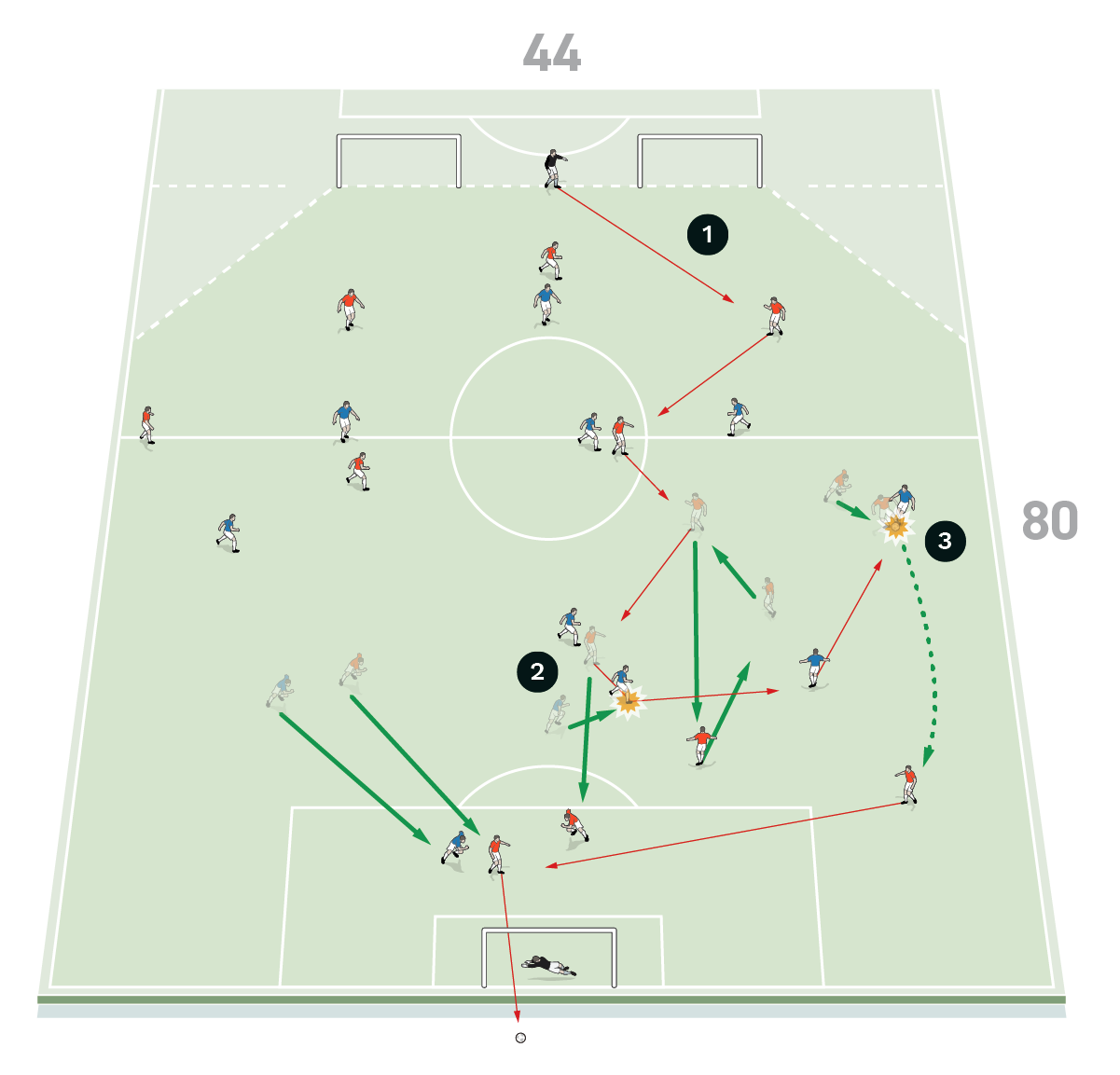
-
The reds attack from the goalkeeper
- The blues intercept and win possession
- The reds counter-press and quickly win the ball back – going on to score
The practice can be progressed to an 11v11 in a full area, or in a tighter area.
COACHING POINTS
What are the key things to look out for technically/tactically?
In the first practice, it’s about the amount of possession and the speed of the pass, linking passes and intensity of press. Counter-pressing when losing the ball is another key one. We also focus on rest defence and defensive positions from the other box.
In the second practice, we want counter-pressing when losing the ball as a possession team. It’s about how the team that has won the ball can then find a quick and calm route out in counter-attack transition.
We look for the same in the 11v11, along with the defenders organising a rest defence in the back line when their team is in possession.
What are the typical mistakes players might make and how could they avoid them?
Not reacting to losing the ball quick enough, and not preparing the space ready for when their team lose the ball. Quality of passing – or lack of – and taking too many touches is also a common theme.
In the SSG or 11v11, the session can ask questions of the players in deciding when, and when not to react – and how to lock players in, ready for turnover with rest defence and counter pressing.
Players may also falter by not counter pressing, being too rushed and quickly losing possession when they win it – and not adopting a rest defence.
Editor's Picks
Deep runs in the final third
Using the goalkeeper in build-up play
Pressing principles
Intensive boxes drill with goals
Penetrating the final third
Creating and finishing
My philosophy
Pressing initiation
Compact team movement
Coaches' Testimonials

Alan Pardew

Arsène Wenger

Brendan Rodgers

Carlos Carvalhal

José Mourinho

Jürgen Klopp

Pep Guardiola

Roy Hodgson

Sir Alex Ferguson

Steven Gerrard
Related
Desire to defend at all costs
Crossing, finishing and defending
Flow the risk
Coaches' Testimonials

Gerald Kearney, Downtown Las Vegas Soccer Club

Paul Butler, Florida, USA

Rick Shields, Springboro, USA

Tony Green, Pierrefonds Titans, Quebec, Canada
Join the world's leading coaches and managers and discover for yourself one of the best kept secrets in coaching. No other training tool on the planet is written or read by the calibre of names you’ll find in Elite Soccer.
In a recent survey 92% of subscribers said Elite Soccer makes them more confident, 89% said it makes them a more effective coach and 91% said it makes them more inspired.
Get Monthly Inspiration
All the latest techniques and approaches
Since 2010 Elite Soccer has given subscribers exclusive insight into the training ground practices of the world’s best coaches. Published in partnership with the League Managers Association we have unparalleled access to the leading lights in the English leagues, as well as a host of international managers.
Elite Soccer exclusively features sessions written by the coaches themselves. There are no observed sessions and no sessions “in the style of”, just first-hand advice delivered direct to you from the coach.
